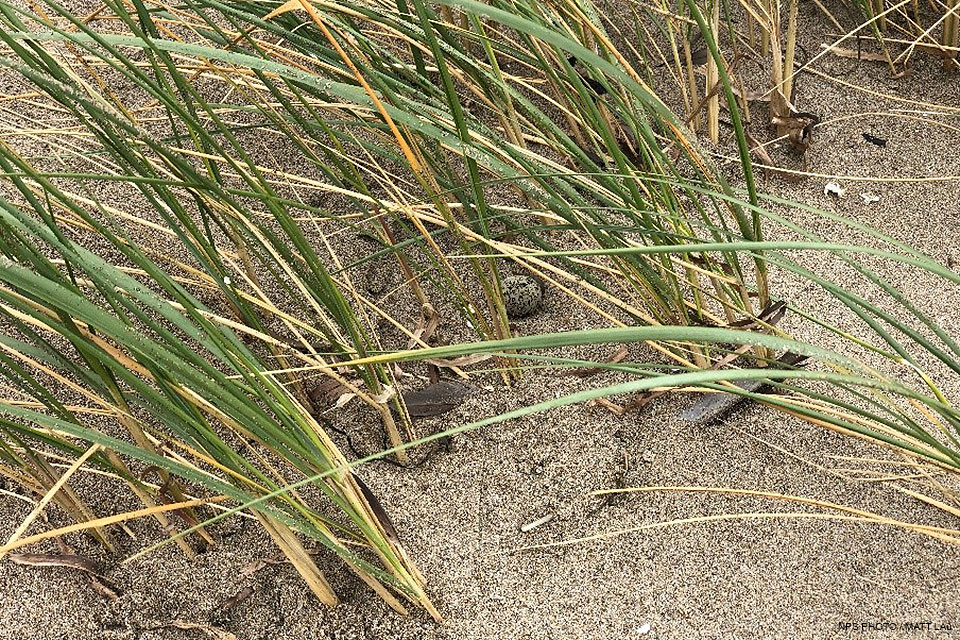Overview
Hello Ploverites! As you may know, this has been a relatively slow year: fewer nests, fewer birds, and lower reproductive success. We are likely looking at a dip in the population trend line, which may prove to be a cyclical pattern due to the past year's El Niño and winter storms. Past monitoring efforts have marked a decline in the breeding population in Point Reyes following an El Niño.
We have lost a total of nineteen nests so far this season (70%), out of twenty-seven nests in the park. Common ravens are responsible for a staggering fifteen of the nineteen nests (79%) lost this season. Last season, we lost eleven total nests (already a record!) to ravens throughout the entire season, and we are just over half way through the current season. The remaining four nests were lost to: an unknown predator (raven or skunk); a high tide from a late spring storm; another was abandoned by the plovers; and one nest failed for unknown reasons (i.e., no predator tracks were present at the nest).
Here are updates organized by beach sites:
Kehoe (K)
We now have two active nests at the north end of Kehoe Beach. The two pairs associated with these nests are the only plovers on this site. Both have three to four weeks before hatching.
Abbotts Lagoon Restoration Area (RA)
There are no known active nests in this large native dune area at this time. Plovers have not been observed in this large native dune habitat for a few weeks now, likely due to the constant presence of common ravens.
Abbotts Lagoon to North Beach parking lot (NP)
There is now only a single nest present on this site, adjacent to North Beach parking lot (easily seen by visitors and docents). Most of the nests on this site have been depredated by common ravens (eight of eleven nests). A single brood from south of the parking lot is in this area, having moved at least a mile north of where they hatched!
North Beach (NB)
We found a single nest in this area, closer to South Beach than North Beach parking lot. Unfortunately, we lost a brood of two chicks, and we are unsure of what caused the failure. The male of this brood has already been observed scraping and courting another female, prepping for a new nest. On the other hand, there is another brood that is several days away from official fledging!
Limantour (L)
Plover activity on Limantour Beach remains low compared to the past few years. We found a nest between the parking lots again, which was quickly depredated by a common raven before we were able to put an exclosure around it. There is one active nest closer to the end of the spit, going west (right) from the parking lots.
If you have any questions, please feel free to let Matt Lau, the park's Snowy Plover Ecologist, know via email. Thank you so much, again, for all your help!
Current Stats
- 27 nests so far this season
- 5 active nests
- 3 hatched
- 19 failed nests
- 5 chicks on the beach
- 0 chicks fledged

A new, single-egg nest on Kehoe Beach is well-hidden within a clump of invasive European beachgrass.
The National Park Service shall not be held liable for improper or incorrect use of the data described and/or contained herein. These data and related graphics (if available) are not legal documents and are not intended to be used as such. The information contained in these data is dynamic and may change over time. The National Park Service gives no warranty, expressed or implied, as to the accuracy, reliability, or completeness of these data. For more information: https://www.nps.gov/disclaimer.htm
